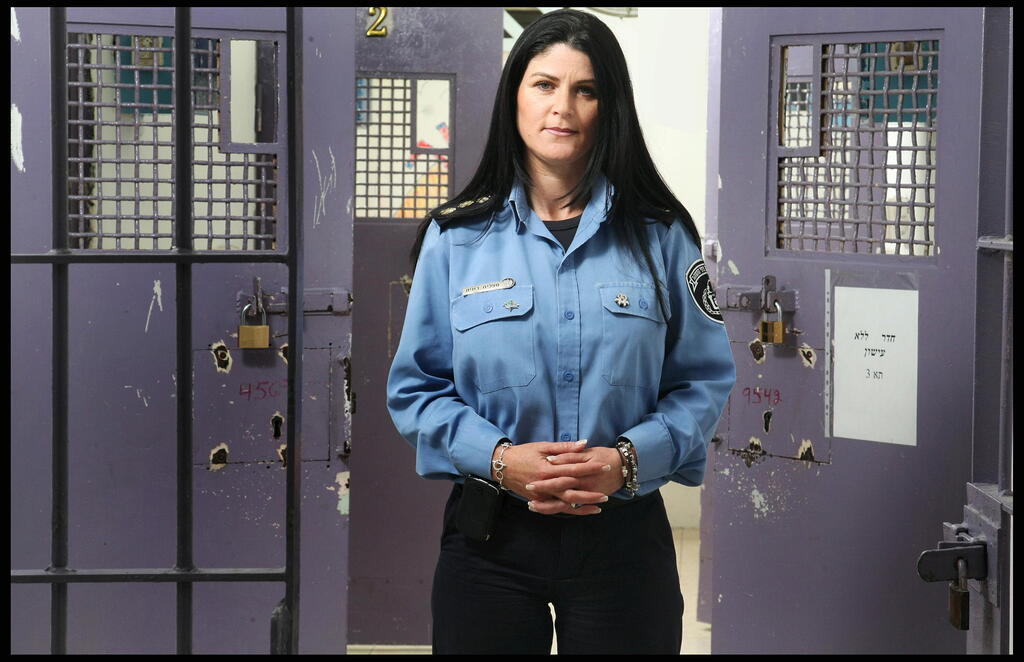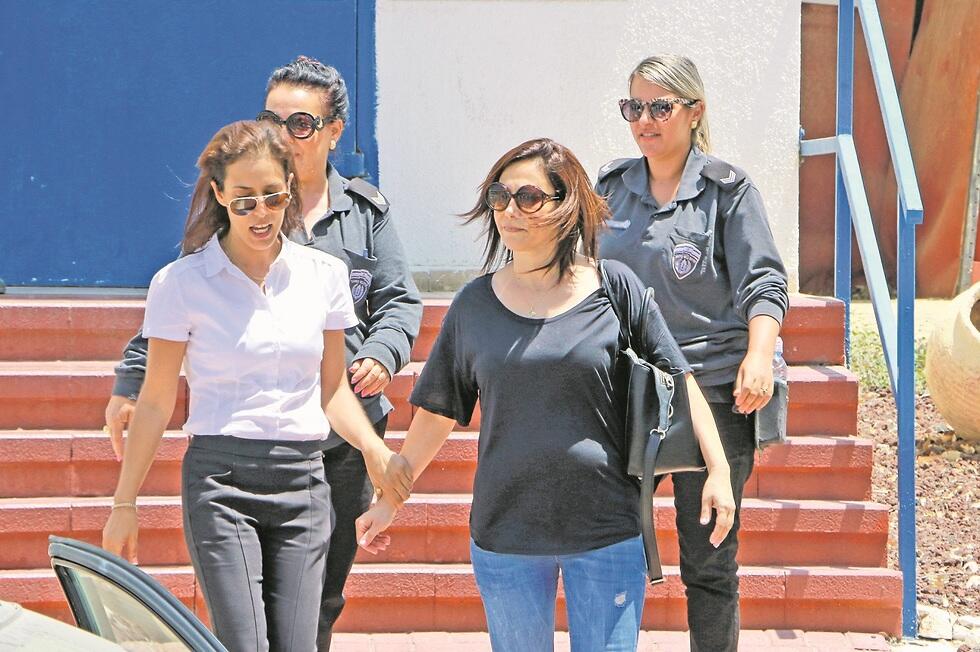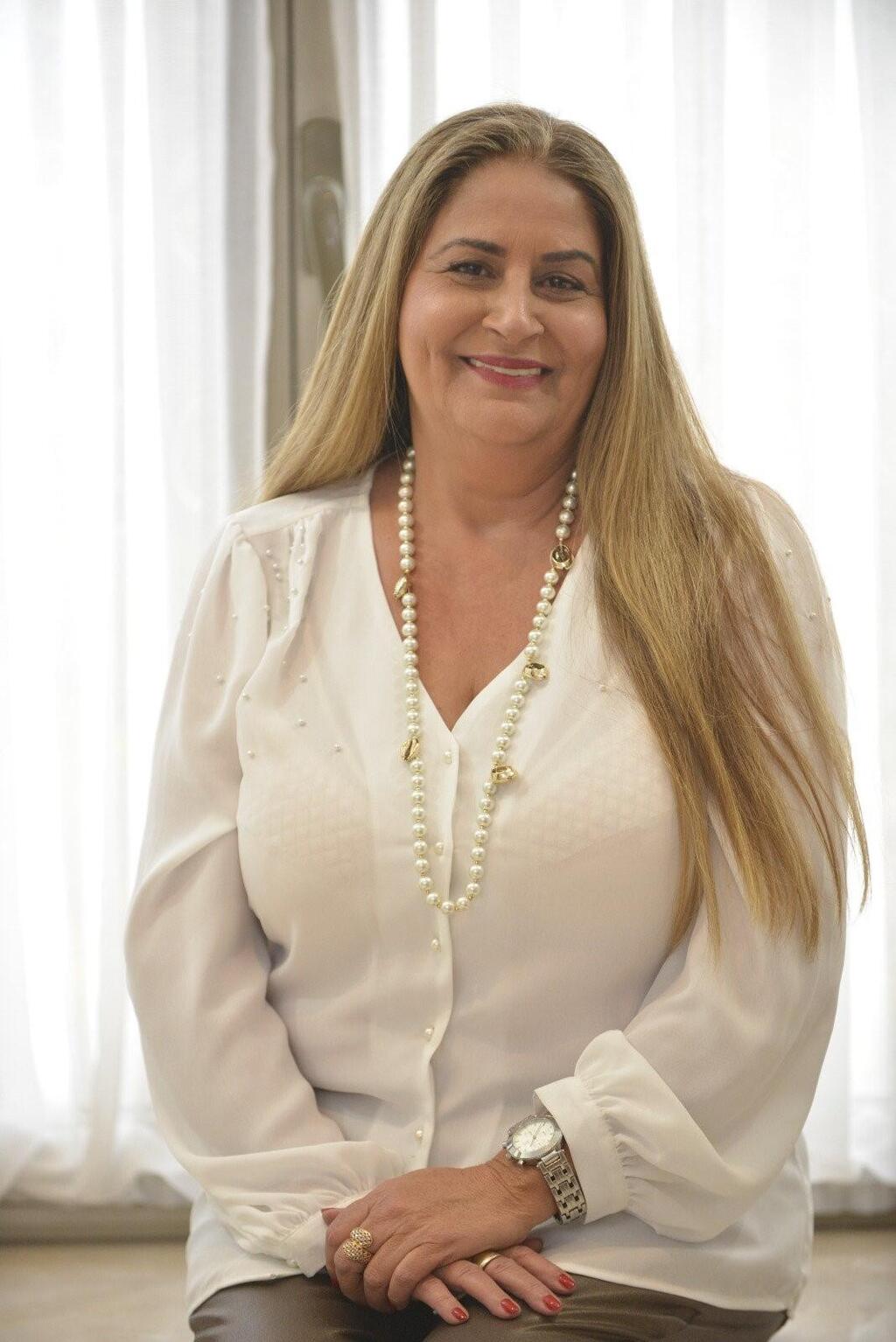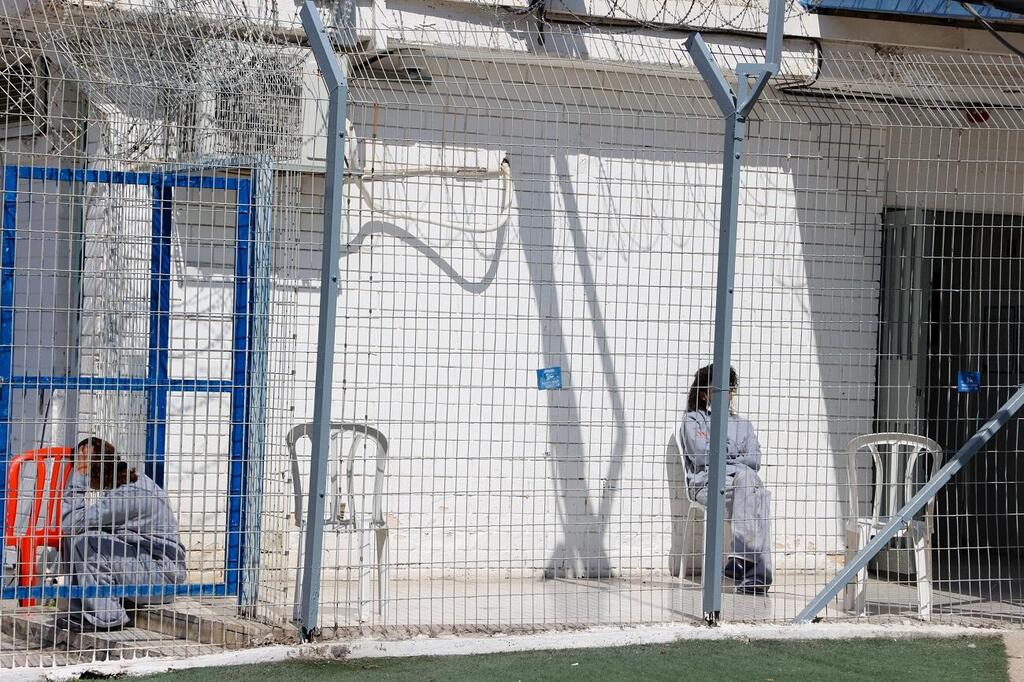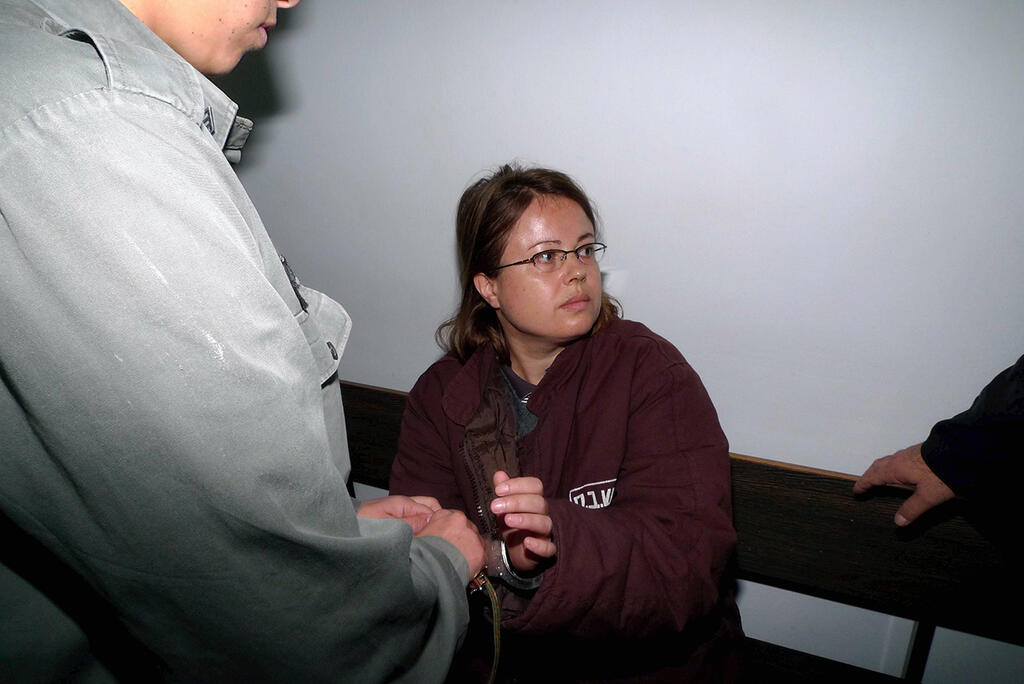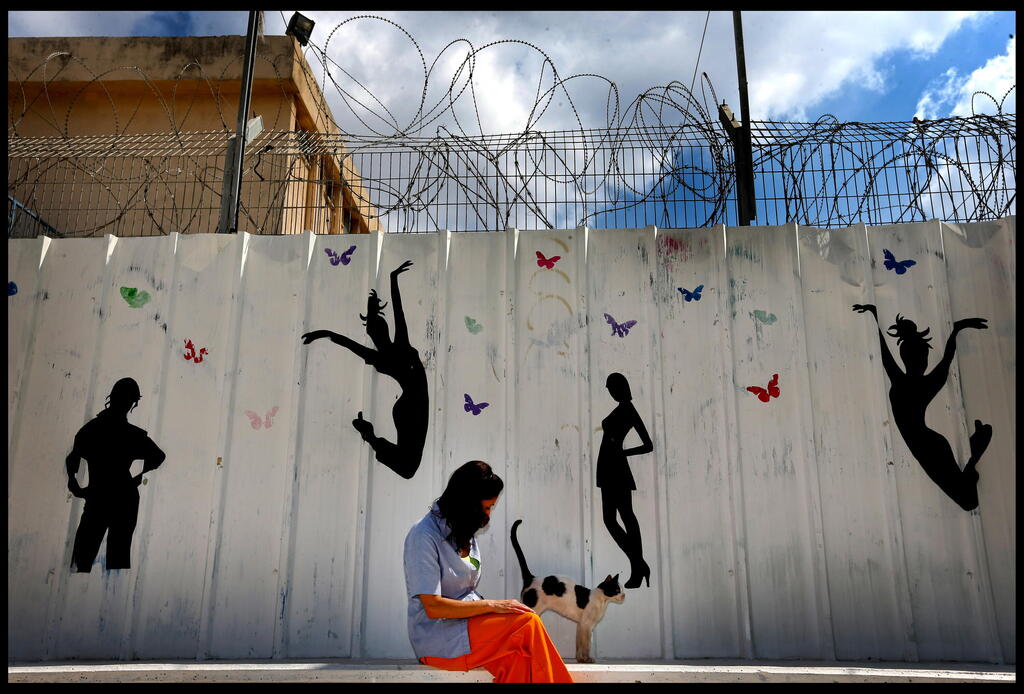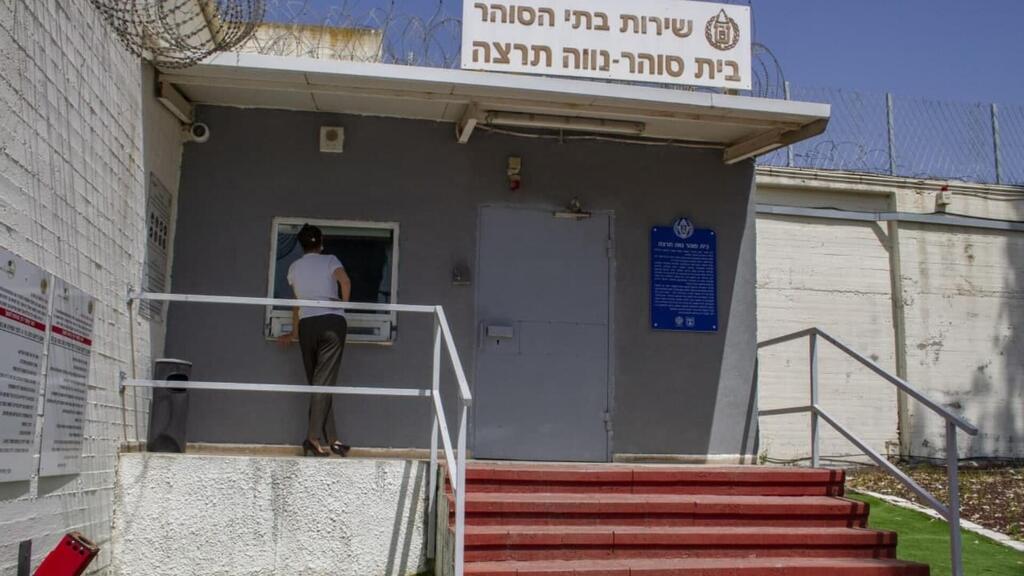One morning clearly stands out in the memory of retired Lieutenant Colonel Ronit Matzliach from the time she spent as director of Neve Tirtza women’s prison: “I came to work, like any other morning,” she tells us.
More stories:
“The day before, a prisoner named Fatma had been released after serving a two-and-a-half-year sentence. She was waiting at the prison entrance. Standing next to my car, she said to me: ‘Take me back in’. She was only 19, and miserable with a plethora of problems. Where was there for her to go? To sexual abuse? To slavery? To getting beaten up?”
Matzliach naturally refused to comply with Fatma’s request. “As I had to get into a meeting, we called the social worker who had worked with her on the outside. A few minutes later, I was called outside. She’d set fire to my car. When I got outside, I saw her smiling. ‘Now, you’ll have to take me.’ She did return, firstly under detention, and then when she was given an eight-month sentence for attempted arson.”
Matzliach explains that Fatma’s not alone. “Some women commit crimes just to get themselves into jail. That’s the main difference between male and female crime. Women commit crimes out of desperation. Men get involved with drugs and crime because they like the feeling of power, because they want to look manly. For women, it’s the opposite. They come from a place of weakness.”
"Our society is extremely chauvinistic. When a woman commits a crime, she’s cast out of her own circle. Women generally have no one waiting for them when they get out. They’ll often come to jail for the rest“
“Another difference is that when women go to prison, they usually find themselves cut off from their nuclear family. Married women’s husbands divorce them. In my 25 years in the prison service, I can’t recall a single case of a male prisoner being divorced by his wife because he was in jail. The home carries on. The children are taken care of. They visit him every two weeks and pay in canteen money.
Our society is extremely chauvinistic. When a woman commits a crime, she’s cast out of her own circle. Women generally have no one waiting for them when they get out. They’ll often come to jail for the rest.“
This “sanatorium” is Neve Tirtza, the country’s only women’s prison that indiscriminately houses women sentenced and those awaiting trial, minors and adults, addicts and women who are clean, women serving long sentences for serious crimes alongside women committing minor crimes, pregnant women and women with infant children up to the age of two.
We talked to the people whose lives have involved this jail to bring the whole story – from its founding as a place to house mainly addicted sex workers - through to the present day when it sometimes serves as home for businesswomen, journalists and politicians – providing us with an insight into female crime - differing in essence from male crime.
We found that women in Israel have not one prison but two:
One is a nightmarish, horrific, dark and gloomy place, housing the State of Israel's lowest, most marginal elements – the forgotten women. This crumbling prison is ridden with fleas and cockroaches.
The second prison is different to the core: It’s a place of salvation and understanding. There’s light at the end of the tunnel. In Neve Tirtza, a significant number of convicts are also victims themselves. Victims of circumstances, victims of men and of all of us as a society. For some women, it’s a place where, for the first time in their lives, they can sleep safely, unafraid of what the next moment might bring. It has hope.
It surprised us to learn that there is no contradiction between these two prisons. They exist together between the gray walls, beneath the lookout towers, behind the bars of Neve Tirtza.
Shifting winds
Never Tirtza prison started out in a nearby British Mandate-era building. It was then transferred, as four cells, to inside Ramla prison and was managed by a man. Although these four cells could only house 24 inmates, 30 were squeezed in.
In 1959, the Israel Prison Service (IPS, Sherut Batei HaSohar known in Hebrew by the acronym “Shabas”) Commissioner Ariyeh Nir offered Yardena Efroni the position of director of the women’s prison.
Efroni agreed on condition that a special building be constructed to provide better conditions for the women. That year, initially in the nearby house, Israel’s first women’s prison was inaugurated.
According to the IPS website, the prison’s name combines the word “Neve” – oasis, a green area in the heart of the desert, a place of hope and “Tirtza” - the Biblical daughter of Zelophehad, so named from the Hebrew word “ritzah” – to run, being in a constant state of motion, in the hope that entering the prison will not seal the inmates’ fate.
The prison moved to new premises on the Ramla-Lod road in 1968. Attorney Avi Amiram claims that “women have always received a certain degree of sympathy. Most judges see women not as criminals, but rather as victims of circumstance.”
“Until 2000, possibly earlier, the women here were mainly blue-collar - murderers, prostitutes and a huge drugs industry. They were women like Orit Arbiv and Sara Angel charged, along with Shmaya Angel, with being an accessory to the double murder of Michel Nahmias and Shulamit Shelly – and then acquitted.“
Amiram explains that “I represented Aviva Granot who, with her partner-in-crime, Hava Ya’ari, murdered Jewish American Holocaust survivor Mala Malavsky in 1985. At the time, she stood in stark contrast to the rest of the inmates in Neve Tirtza. To this day, I don’t know which of the duo cajoled the other, but if sitting next to them in a café, you’d never imagine they’d been convicted of murder. I’d visit Aviva and she’d prepare astrological maps for me. She was, on the one hand, a rather rough kind of character and on the other, very sensitive.
I suddenly met a different kind of inmate, one who hadn’t been raised in neglect. Gitit Israelov (born into an affluent Tel Aviv family and sentenced to life in prison for the 1986 murder of her fourth husband, Yosef Israelov). She was an unusual figure in those years.”
“Holding women in this room, even for a short time, severely violates the women’s right to dignity”
Until the 1980s or 1990s, the inmates were characterized by coming from very difficult social and economic backgrounds and finding themselves involved with drugs, prostitution and accessories to their husbands’ crimes. They were never the dominant figures. The more serious the crime, the less likely it was committed by a woman.”
Amiram continues: “The watershed moment was Etti Alon who represents the new generation of white-collar inmates. We suddenly find women with no criminal backgrounds, in key positions, committing financial crimes and crimes involving fraud. Then we get women like Tsipi Rafaeli, and the most senior member of the group – Faina Kirschenbaum.”
Judge Aharon Barak said that “an enlightened society is judged by the treatment of its prisoners.” Neve Tirtza tells us we have a problem. There are presently 158 women there: 98 prisoners, 60 detainees and one baby. 65% of the women are mothers. At 65%, the rate of recidivism (returning to jail) is higher for women than 45% of their male counterparts. On the outside, women usually go back to the very same place where they were victims and there’s no one there to protect them.”
'No one can really protect you from crazy inmates'
And then they all return to the same place – Neve Tirtza. Conditions are harsh. The 2021, a Public Defense report addressing conditions in Israel’s jails, described poor maintenance conditions in certain wings, severe dampness on the walls and cats freely wandering around.
The children’s area is neglected and infested with cockroaches. The room designed for the inmates’ children’s visits and the waiting room are not fit for use. The report reads: “Holding women in this room, even for a short time, severely violates the women’s right to dignity.”
The Public Defense further notes complaints from transgender inmates held in situations where they face discrimination and that their body searches are conducted by men, infringing on their dignity and right to privacy.
“Everything you’ve heard is true,” says an Israeli government official who has visited the jail on multiple occasions. “It’s an old, Mandate-era building that has been patched up over the years and there isn’t the budget to deal with it. They keep promising to knock it down and build a new one – but it’s not happening. There’s also a serious bed-bug problem.”
Former inmate, Ziva Yitzhak was convicted of financial crimes and sentenced to a relatively short eight-month stint – known in jail slang as “coming for coffee and cake”. She doesn’t need government reports to know what happens behind the locks and bars: “Conditions are horrendous. There are cats, huge cockroaches and dangerous inmates everywhere. There’s no sense of safety. No one can really protect you from crazy, evil inmates.”
Yitzhak recalls “I started off in a transition wing where I spent two and a half weeks instead of one. Conditions were horrifying. There are six cells, one with cameras. Six to eight prisoners in each cell. There’s a terrible stench in the air. You spend 23 hours a day in the cell, with a single hour, 11:00 – 12:00, outside.“
How did you pass the time?
“For the first week, I lay on a mattress on the floor like a mummy. I couldn’t eat. I couldn’t get up or shower. It was very hard. They then wanted me to work in the kitchen. I told them I wasn’t going to the kitchen.”
Why?
“I was a career woman and I’d never liked the kitchen - definitely not a prison kitchen. The food was terrible. Breakfast was always the same – a small plastic cup of milk and a 50-gram tub of cheese. There was no end of bread. Lunch: Sundays was smelly sausages, Mondays was chicken wings complete with feathers, then some undetermined kind of hamburger. It was all processed, nothing real. On Friday nights, there was a thigh baked in the oven and everyone would fight over leftovers, asking one another if you mean to finish what’s on your plate. The guards, naturally, get different food.“
Yitzhak was ultimately put to work in the factory. “We made all sorts of things there, like the thing you put on a pizza dish so that it doesn’t stick to the cardboard. I didn’t like being there. There are serious criminals there and you’re afraid to talk. When I was taken out of the transition wing to Wing A, the wing for general prisoners, I begged to be brought back there, where I felt safer. Inmates were fighting and cursing. One day, like an idiot, I commented to a fellow inmate about her throwing her cigarette on the floor. She started yelling at me and almost hit me.”
“I was totally shocked by what I saw in Wing A. My cellmate was an addict and she’d fall asleep with a lit cigarette in her hand. I tried gently waking her up as I thought the cell would catch fire. She started shouting at me in the middle of the night. There were three very nice, older, Colombian women arrested for drug smuggling on entering the country. Prison was the first place I used the Spanish I’d learned from the telenovelas on Viva.”
“And there are women there who’ve done dreadful things. Worse than Marie Pizem: One woman had murdered her two daughters and another three of her four children.”
Could you sit with them?
“I wasn’t really very sociable. There are cliques. An Arab clique, a Russian clique etc., each with one more dominant woman in the group. Then there’s the very quiet ones, the ones who’ve committed the most severe crimes. I could tell that what they had done was eating them away inside. Michal Aloni, who murdered her two daughters in 2010 was simply miserable. She’d lost it. She walked around all day talking about her daughters.“
Yitzhak spent most of her incarceration writing. She documented her experiences which were published as a book after her release. The book, “The winning number is 9016799” named after her prison ID number, written in flowing and direct style, immerses the reader into the stifling experience of prison life.
Between incarceration and rehabilitation
The physical conditions are not the only problem in Neve Tirtza. Approximately 70% of the inmates suffer from varying degrees of mental illness. Unlike in men’s prisons, which come in various levels of security, types of crimes and incarceration time – there’s only one Neve Tirtza,” an IPS source tells us.
"So, the staff is required to deal with a broad range of inmates with different kinds of problems, primarily cognitive and emotional. While men have the Mental Health Center, under the auspices of the Ministry of Health, the only way to treat female prisoners is by hospitalizing them in civilian institutions.”
Matzliach explains: “They wanted me to send a prison guard to spend 24 hours a day with a prisoner in a room, as if the guard herself was psychotic. I said no way. I founded the ‘Katef (Shoulder) Project’, whereby female prison guards are trained by the Industry Ministry, Trade and Labor to serve as caregivers for the prisoners.”
But the picture within the prison walls isn’t so bright. The Public Defense found that detainees are sometimes held in segregated conditions due to difficult psychological circumstances, in a manner that may adversely affect their situation and contrary to the grounds for separation set out in law.
Neve Tirtza's disadvantage - it’s lack of a comprehensive psychiatric infrastructure for women – is also its advantage. The IPS source explains that “in Neve Tirtza, there’s a broad range of treatments. They try to rehabilitate the inmates and introduce them to new opportunities. In criminological terms, the reasons leading women to commit crimes, are different. Women are usually primarily victims. They don’t commit crimes because of patterns. It begins with victimhood either at a very early age, or later on within relationships.“
Can proper treatment be provided in prison?
“It’s complicated. Special adjustments need to be made. Women who have harmed their own children, for example, are not a group. Each has her own story – mostly related to psychological issues." The current director, Shula Abergil, is trying to change things.
There are women imprisoned in Neve Tirtza who have murdered their own children. Former prison director, Matzliach, recalls the story of Olga Borisov who served a seven-year sentence for drowning her four-year-old son, Alon, who took her own life a month after her release.
"There was a wave of women who had killed their children in Neve Tirtza during my tenure. When they arrived, they were in a catastrophic emotional state. They began treatment in jail. We set up a lot of projects. Olga was the jail librarian and functioned very well. Regina Kryuchkov (who drowned her son in a bucket) is a seamstress and joined the employment center where they make ‘Shilav’ clothing and proved herself to be a good worker. Michal Aloni became religious and joined the religious classes and Marie Pizem was segregated and became integrated in the ’clean’ Saviyon Wing.”
Director and playwright, Keren Cohen Israel, spent six years in Neve Tirtza - not as an inmate but running a community theater. She didn’t accept everyone into the theater group. I wasn’t prepared to work with women whose crime had been murder for its own sake. It was difficult. I felt it would be like giving tools to the devil. Theater empowers and builds your story, but if you’re coming from a place that’s not clean, it’s just one lie on top of another and I wasn’t willing to be part of that cycle.”
Cohen Israeli listened to the incarcerated women's stories and wrote plays based on them, mainly focusing on the pain behind them. The inmates performed the plays for their families, other inmates, prison and rehabilitation professionals. For many, watching the plays constituted an extraordinary glimpse into the minds and souls of the inmates. Cohen Israeli recalls a woman who had murdered her abusive partner ending her monologue with the words: “I didn’t mean to kill you. I meant to kill the pain.“
“The first time I went into the jail, I had a baby and I was in my second pregnancy,” Cohen Israeli tells us. “I saw a baby pen and a bassinet and realized that one of the inmates had just given birth. It turned my stomach. She’d be raising him in prison until he’s two years old. All the other prisoners become kind of mothers to him. He has a hundred babysitters.”
Cohen Israeli, who with actress Dana Dvorin has since founded the “Platforma” theater to advance women victims of violence, has a great deal of memories from her time working in Neve Tirtza. But her voice softens as she talks about Dalal Daod who was convicted of murdering her abusive husband and was granted clemency after 18 years in Neve Tirtza.
“She was with me for eight years straight. I saw her as a victim of circumstance and terrible abuse. Her husband brutally raped her in front of her daughter only three days after giving birth and threatened to murder the newborn baby. And then she killed him.”
“I feel that she was done a great disservice. She shouldn’t have been in jail. I presented her story in my final play. It wasn’t from an apologetic standpoint. She’d done that a million times. It was to settle scores with the system: the police with whom she’s filed dozens of complaints; the hospitals where she was treated following her attacks; the court that wouldn’t grant her a divorce. All these institutions must be held to account.”
“My work in Neve Tirtza has taught me that you can create change from inside prison. Outside of prison sounds much more threatening. Some women blossom in jail, learning to read and write and realizing that they can succeed. The IPS encourages it, but is limited in what it can do. It’s still a prison.”
Neve Tirtza director, Lieutenant Colonel Shula Abergil, describes her work as “very challenging.” She’s held the position for a year and eight months after serving as a prison guard. “Every day is a new day. It’s like getting up every day like it’s my first day. Every morning, I ask what are we expecting today. Every day’s new and interesting. There’s a lot to do. Something could happen at any minute.“
Give an example
“Apart from the daily structure of prison life, we go with the flow. We’re spontaneous. There’s no fighting like in the men’s prisons. The incidents here are different, like an inmate suddenly having a panic attack. She’s treated and a few minutes later, she looks completely different. We have staff who have not formally qualified in mental health treatment, but do more than the professionals. It’s things you can’t describe. You have to experience it.”
There really is no Mental Health Center for female prisoners like there is for the men. That said, there’s no woman here in need of treatment or hospitalization who doesn’t get the help she needs. We’ve set up a unit to treat the root cause of the problem. We ask why the crime was committed. It might be a mugging, drugs or even the murder of a child. A teenage girl doesn’t start drinking for no reason. Her problem isn’t alcohol. The problem is whatever trauma she’s experienced.”
“The social workers here are wonderful. In IPS, we call it “sewing a repair suit.” It’s long hard work, with lots of treatment specialists and it produces great results. Naturally, if we see that a woman needs to be hospitalized, she’s hospitalized.“
The IPS said in response, “Neve Tirtza has a dedicated multi-professional team of staff, including specialists in various kinds of treatments who meet the inmates on a daily basis. The treatment package provided to the inmates by IPS is in a league of its own.
"A psychiatric doctor meets the inmates and detainees for supervision and treatment and any inmate needing hospitalization is immediately admitted to a psychiatric hospital. The Mental Health Center belongs to the psychiatric hospital in Beer Yaakov and operates in accordance with decisions made by the Ministry of Health.
"We stress that IPS does everything possible to best maintain the building that has recently undergone massive refurbishment. Further renovations and changes to improve the living conditions of inmates and staff are expected in the future."



